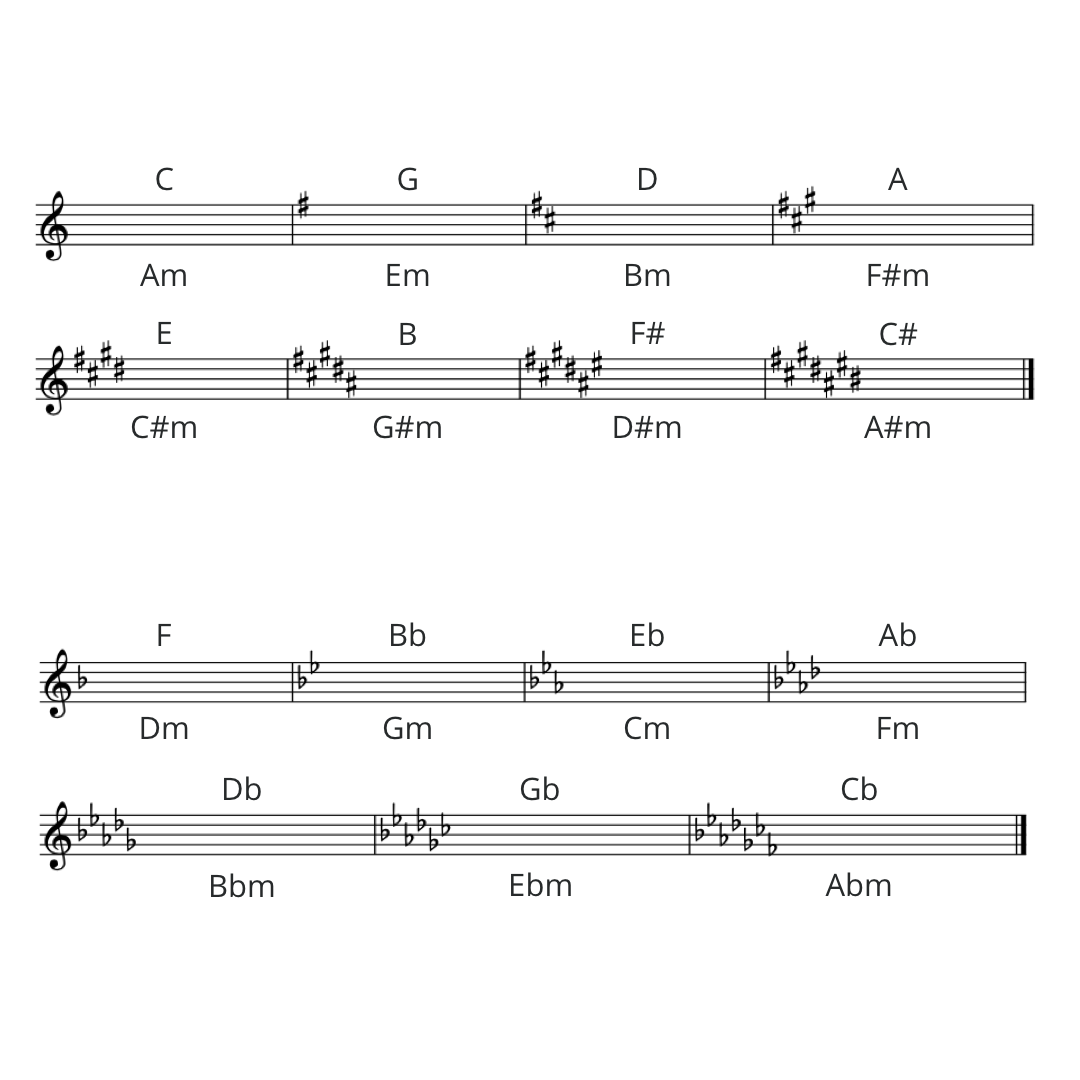This one is the last post regarding the key-signature series. In this article, I will list the key signatures corresponding to the minor keys.
What is a minor key?
As mentioned in the first article, each key signature corresponds to a major and minor scale.
Each major scale has a relative minor scale and vice versa. Relative scales have the same key signature. For instance, C is Am relative scale, meaning they both have the same key signature.
How to identify the minor relative scale?
The relative minor starts on the 6th scale degree of the major scale. And, the relative major starts on the 3rd scale degree of the minor scale.
For instance, since the 6th degree of F major is D, the relative minor of F major is D minor. Also, since the 3rd degree of B minor is D, the relative major of Bm is D.
As an exercise, I recommend that you identify all the relative minor scales of the major scales.
Below you will find a list of the relative minor scales and the corresponding key signature.

With what you have learned in the previous articles of this series, and what we have explained today, you should be able to recognize the different key signatures.
💡Remember, the way to memorize this is by practicing and internalizing the information.
See you next time!
Check out the other articles in this series:
